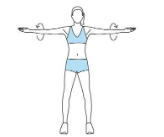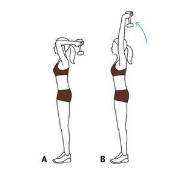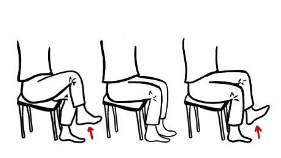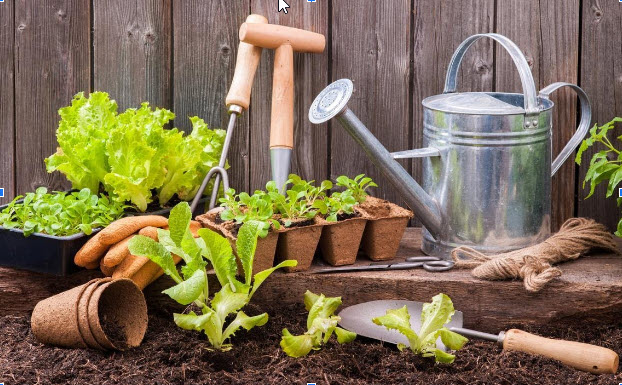
Exercises You Can Do While Sitting
Exercises You Can Do While Sitting
Sit up straight and raise your arms up to your sides, parallel to the floor. Move your arms in fast clockwise motions, gradually making the circles bigger. Do 20 arm circles, then take a 20-second break. Reverse the direction and repeat this exercise as needed. This exercise works your shoulders, upper arm, and back.
Overhead Tricep Extension
For this exercise, you can grab a lightweight item such as a book, or you can do it without any extra weight. Sit up tall and reach your arms straight up over your head close to your ears. Lower your hands behind you down the back of your head and neck. Then, lift your hands back up until your arms are straight up over your head. Remembering to keep your arms close to your ears. Complete 3-4 sets of 10-15 reps to get the best results.
Overhead Press
You’ll want to use some form of weights for this exercise. If you don’t have dumbbells, you can use a household item such as a water bottle or soup can. Sit up straight and extend your arms to your sides. Bend your elbows so your fists are aligned with your ears. Push the weights up above your head, then lower again. Perform 4 sets of 15 reps. This exercise works your shoulders.
Seated Marches
First, you will need to steady yourself in a chair or on the couch. This is best achieved by placing your hands on the side of your chair or next to the hips. While sitting with your knees bent on a chair, lift your left thigh up as high as feels comfortable, then slowly lower your leg. Repeat the same action with your right leg like you’re marching. Aim for 15 marches on each leg for 3-4 sets. This exercise engages your core and cardiovascular system.
Calf Raises
Sit at the edge of your seat with your feet firmly planted on the ground. Squeeze your calves and raise your heel off the floor. Hold the contraction for a second before slowly lowering your heel. Repeat this exercise for 4 sets of 25 reps.
Sources
Mansfield, B. (2020, January 18). 7 exercises while sitting down in a Chair (great for work or home!). Retrieved from https://www.yourmodernfamily.com/exercise-sitting-down/
Polish, J. (2020, May 25). 13 exercises you can do while sitting. Retrieved from https://www.bustle.com/p/13-exercises-you-can-do-while-sitting-22915031
Williams, L. (2020, March 25). 11 accessible Chair exercises for older adults. Retrieved from https://www.verywellfit.com/chair-exercises-for-seniors-4161267









